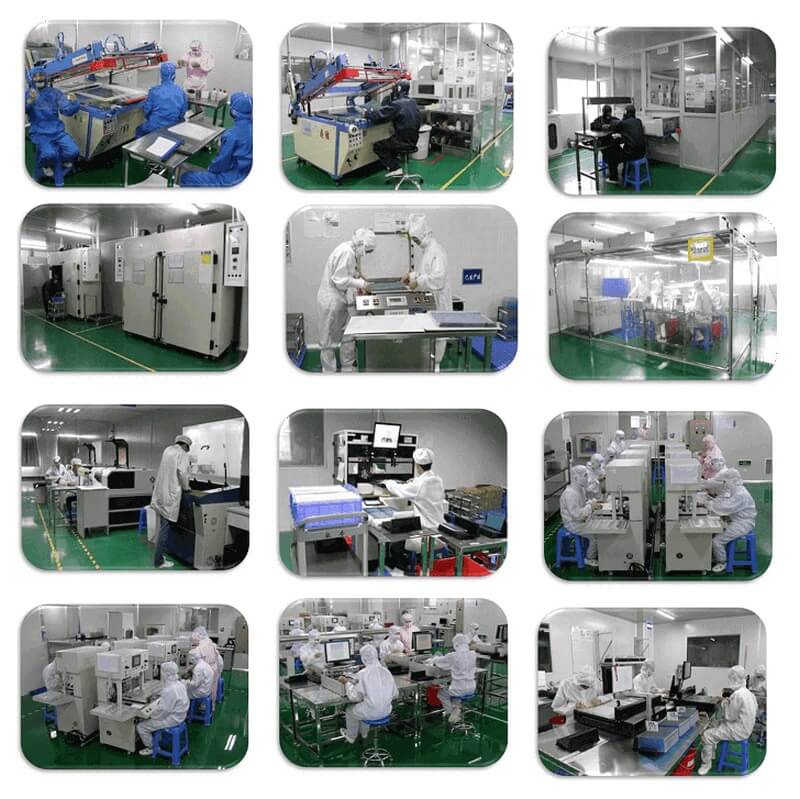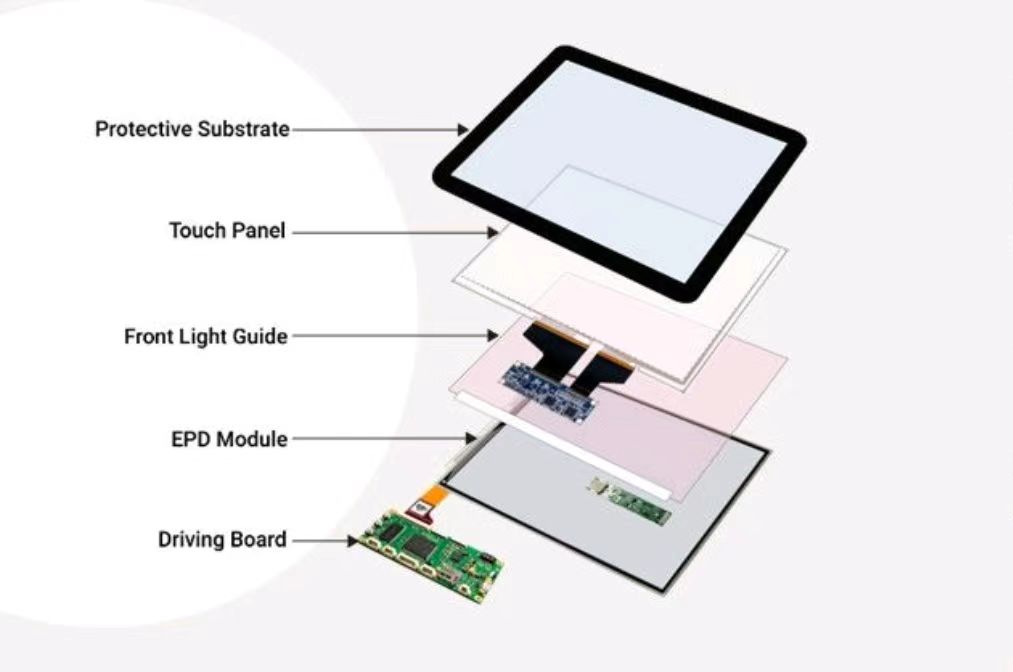News
Glass vs. Acrylic for Display Panels: Which is Better?

Glass vs. Acrylic for Display Panels: Which is Better?
When choosing materials for display panels, particularly for monitors or touch screens, the decision between glass and acrylic is critical. Each material has unique properties that make it suitable for different applications, and understanding these differences is key to selecting the best option for your specific needs. This article delves into the characteristics, advantages, and disadvantages of glass and acrylic panels, providing insight into which material may be the better choice for your project.
Acrylic Panels: Characteristics and Benefits
Acrylic, also known as PMMA (Polymethyl Methacrylate), is a widely used material in various industries, including display technology. Commonly referred to as acrylic cover plates or organic glass panels, acrylic panels offer several notable features:
-
Surface Hardness: Acrylic panels typically have a surface hardness of around 3H, which is significantly lower than glass, which usually ranges from 6H to 9H, depending on the type (e.g., Corning Gorilla Glass can reach 8H-9H). This means that acrylic is more prone to scratches compared to glass.
-
Impact Resistance: One of the standout advantages of acrylic is its superior impact resistance. Acrylic panels are much less likely to shatter upon impact, making them a safer option in environments where durability is crucial. Unlike glass, which can break easily when dropped from a certain height, acrylic is far more resilient.
-
Thermal Expansion and Contraction: Acrylic panels exhibit noticeable thermal expansion and contraction, a physical property that must be considered during installation. While tempered glass also experiences some thermal expansion, it is significantly less pronounced and can often be disregarded.
-
Chemical Resistance: Acrylic is less resistant to acids and other corrosive substances compared to glass. If the display panel is likely to come into frequent contact with rainwater or other potentially corrosive elements, glass may be a more suitable choice.
-
Heat Resistance: Acrylic has a much lower heat resistance than glass. Typically, acrylic begins to deform at temperatures around 90°C, whereas glass can withstand much higher temperatures without deformation. This makes glass more suitable for high-temperature environments.
-
Weight: Acrylic is lighter than glass of the same size and thickness. This can be advantageous in applications where weight reduction is important, such as in portable or handheld devices.
-
Optical Clarity: Both acrylic and glass offer high transparency, but acrylic is more prone to aging and can develop a haze over time, which may affect long-term clarity.
-
Manufacturing Process: The production process for acrylic panels is generally more efficient. Acrylic panels are typically batch screen printed before being cut and processed by CNC machines, while glass panels must be shaped before screen printing, which can be less efficient.
-
Cost: Acrylic is generally less expensive to produce than glass. The manufacturing process for glass is more complex, and the higher defect rate, difficulty in processing, and higher scrap rate contribute to its higher overall cost.
Glass Panels: Characteristics and Benefits
Glass panels are often the preferred choice for high-end display applications due to their superior durability, optical clarity, and resistance to various environmental factors. Some of the key features of glass panels include:
-
Surface Hardness: Glass panels offer a much higher surface hardness, typically ranging from 6H to 9H. This makes them highly resistant to scratches, ensuring a pristine appearance over the panel's lifespan.
-
Impact Resistance: While glass is generally less impact-resistant than acrylic, modern advancements like tempered glass and chemically strengthened glass (e.g., Gorilla Glass) have significantly improved its durability, making it less prone to shattering.
-
Thermal Stability: Glass exhibits minimal thermal expansion and contraction, making it ideal for applications where temperature fluctuations are common. This stability ensures that the panel remains securely in place and maintains its integrity over time.
-
Chemical Resistance: Glass is highly resistant to corrosion and chemical damage, making it the preferred choice for outdoor applications or environments where the panel may be exposed to harsh chemicals or rainwater.
-
Heat Resistance: Glass can withstand high temperatures without deforming or losing structural integrity. This makes it suitable for environments with elevated temperatures, such as industrial settings or outdoor installations.
-
Weight: Although heavier than acrylic, the added weight of glass can be advantageous in certain applications where additional stability is required.
-
Optical Clarity: Glass panels maintain their optical clarity over time, with less susceptibility to aging and yellowing compared to acrylic. This ensures that the display remains clear and vibrant throughout its use.
-
Aesthetic Appeal: Glass panels often provide a more premium look and feel, with options such as anti-glare, anti-reflective, and ultra-clear glass enhancing the viewing experience.
-
Variety of Glass Types: There are numerous types of glass available for different applications, including tempered glass, anti-glare glass, and anti-microbial glass. Each type offers specific benefits, allowing for customization based on the application’s needs.
Choosing the Right Material for Your Display Panel
When deciding between glass and acrylic for your display or touch screen panel, the choice ultimately depends on the specific requirements of your application:
-
Durability and Impact Resistance: If your application requires a panel that can withstand high impact and is less likely to break, acrylic is the better choice.
-
Scratch Resistance and Optical Clarity: For environments where scratch resistance and long-term optical clarity are crucial, glass is the superior material.
-
Environmental Exposure: If the panel will be exposed to chemicals, high temperatures, or outdoor conditions, glass is the more suitable option due to its superior resistance to these factors.
-
Cost Considerations: If budget constraints are a primary concern, acrylic may be more cost-effective while still providing adequate performance for many applications.
-
Weight and Installation: In applications where weight is a concern, such as in portable devices, acrylic’s lighter weight can be advantageous.
Conclusion
Both glass and acrylic have their own set of advantages and limitations, making them suitable for different types of display panel applications. Glass is ideal for environments that demand high durability, scratch resistance, and long-term clarity, while acrylic offers superior impact resistance, lighter weight, and cost-effectiveness. By understanding the specific needs of your project, you can make an informed decision that ensures the best performance and longevity of your display or touch screen panel.
DINGTouch Custom Solutions
At DINGTouch, we offer customizable solutions for both acrylic (PMMA) and glass cover plates, including a wide range of specialized glass types such as high-temperature ink glass, anti-glare glass, integrated black glass, explosion-proof glass, anti-reflective glass, ultra-clear glass, antimicrobial glass, Asahi Glass, Corning Glass, and more. Whether you need a standard cover plate or a customized solution, we can help you find the perfect material for your display needs. Contact us today to explore your options and receive expert guidance on selecting the right cover plate material for your project.
DINGTouch:Committed to continuous innovation and improvement of product quality to meet customers' high requirements and expectations.
DINGTouch is a manufacturer that provides high quality touch screen panels. Focus on the design, manufacturing and sales of touch screen panels, and are committed to providing customized solutions that satisfy customers.
DINGTouch: In the process of customizing touch screen panels, we focus on close cooperation and communication with customers. Understanding customers' needs and providing customized solutions will meet customers' individual needs. The company's products are favored by customers for their high quality and reliability, and provide them with the best touchscreen panel solutions.
At DINGTOUCH, we are the world's leading touchscreen manufacturer, helping businesses around the world take advantage of this exciting technology. For more information, please visit the home page now.
Find the DINGTouch technical team to achieve the success of your company's new project.
How to choose touch screen customization?
DINGTouch is a company specializing in the R&D and production of touch screen technology, headquartered in Shenzhen, China. As a professional touch screen supplier, DINGTouch is committed to providing high-quality, stable and reliable touch screen products to meet the diverse needs of customers. We continue to carry out technological innovation and product optimization to ensure that its touch screen products have good sensitivity, accuracy and durability.
In addition to the products themselves, we also focus on cooperation and communication with customers, and are committed to providing customized solutions and excellent after-sales services. Through continuous efforts to improve product quality and customer satisfaction, we have established a good reputation in the touchscreen industry and won widespread market recognition.
What DINGTOUCH can do:
• PCAP maximum size 65”
• Multi-touch (Touch screen can be customized to your needs.)
• Optical bonding service/air bonding
• LCD interface: HDMI/RGB/MIPI/LVDS/EDP, etc.
• PCAP interface: IIC/USB interface
• CTP can customize the cover glass surface treatment process AG (anti-glare), AR (anti-reflection), AF (anti-fingerprint), waterproof, and glove touch
• Supports 0.55 mm-12 mm coverslip touch.
• Support operating temperature: -40℃-90℃.
Dingtouch Industrial Capacitive Touch Screen Manufacturer
In conclusion, Dingtouch as a professional touch screen manufacturer with more than 10 years touch screen experience.We have many capacitive touch screen. Such as5 inch touch screen,7 inch touch screen,10.1inch touch screen,15 inch touch screen,15.6 inch touch screen,17 inch touch screen,18.5 inch touch screen,19 inch touch screen,21.5 inch touch screen,32 inch touch screen, However, we also welcome to customize your own touch screen . Contact our team today to learn what capacitive touch screen are best for our retail business needs.
Contact us NOW! sales@szdingtouch.com

CATEGORIES
CONTACT US
Contact: Dingtouch
Phone: +8615815536116
Tel: +8615815536116
Email: sales@szdingtouch.com
Add: Building A, Bailu Plaza, No. 48, Gonghe Industrial Road, Gongle Community, Xixiang Street, Baoan District, Shenzhen,China. 518126




 Dingtouch
Dingtouch